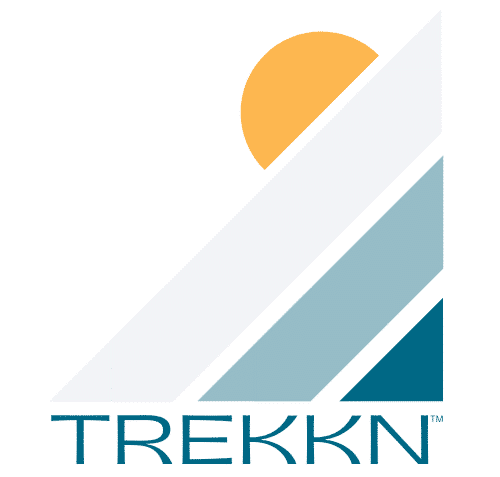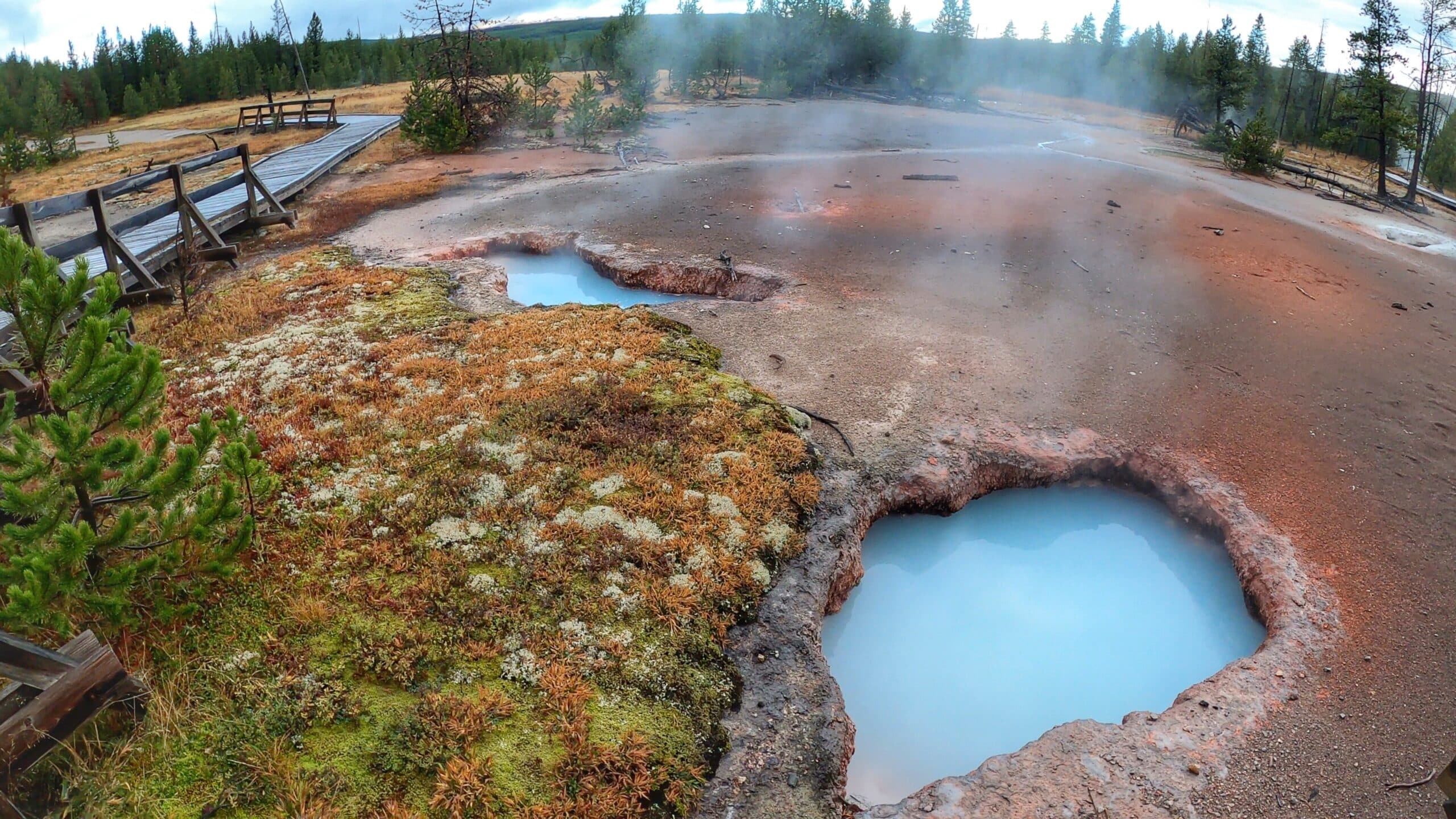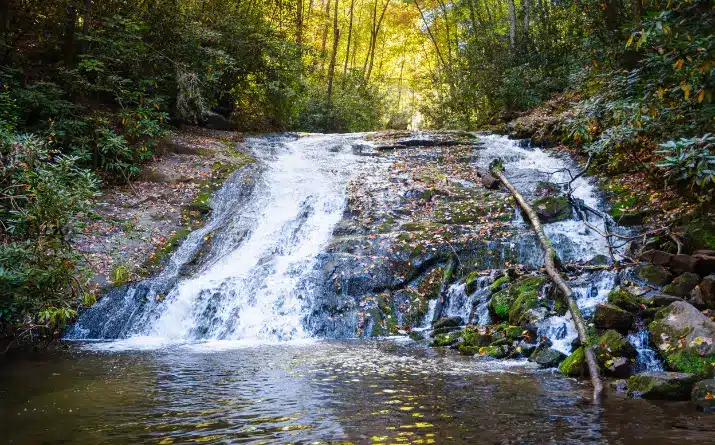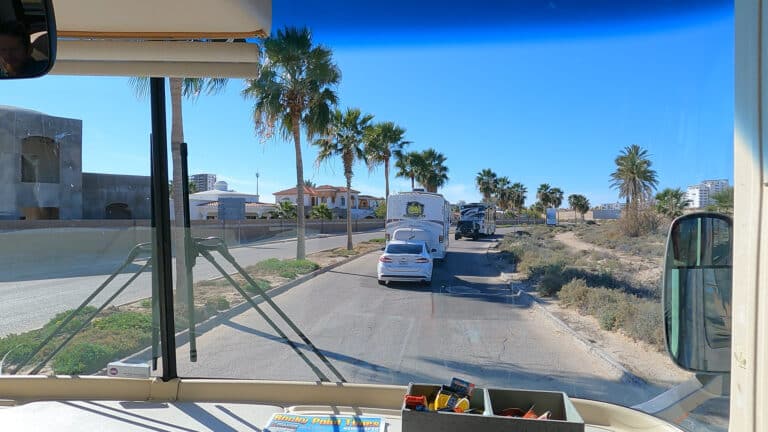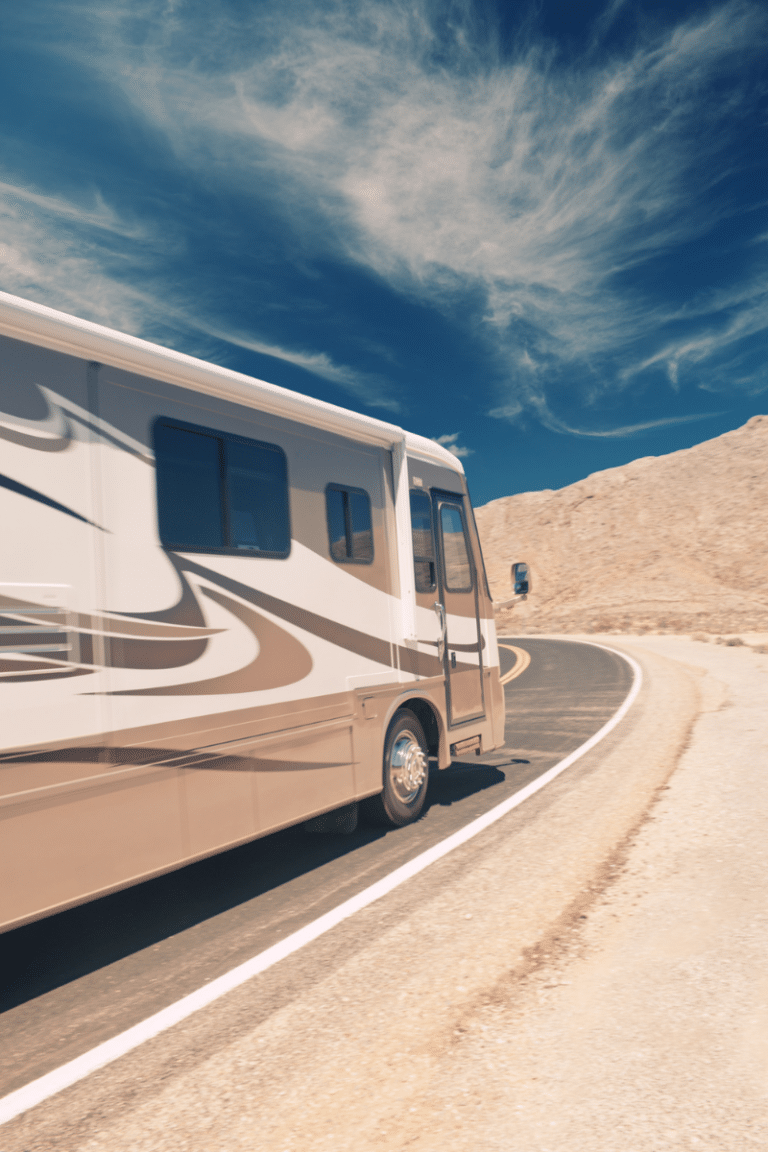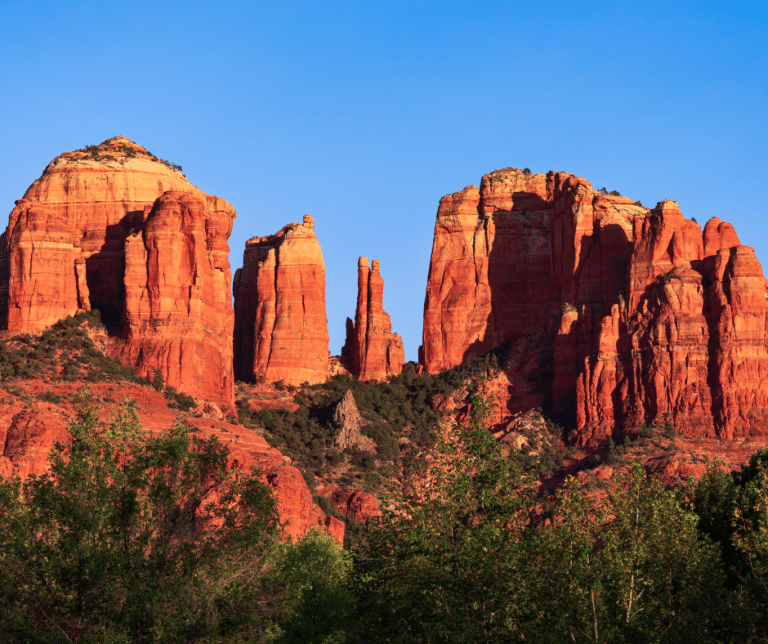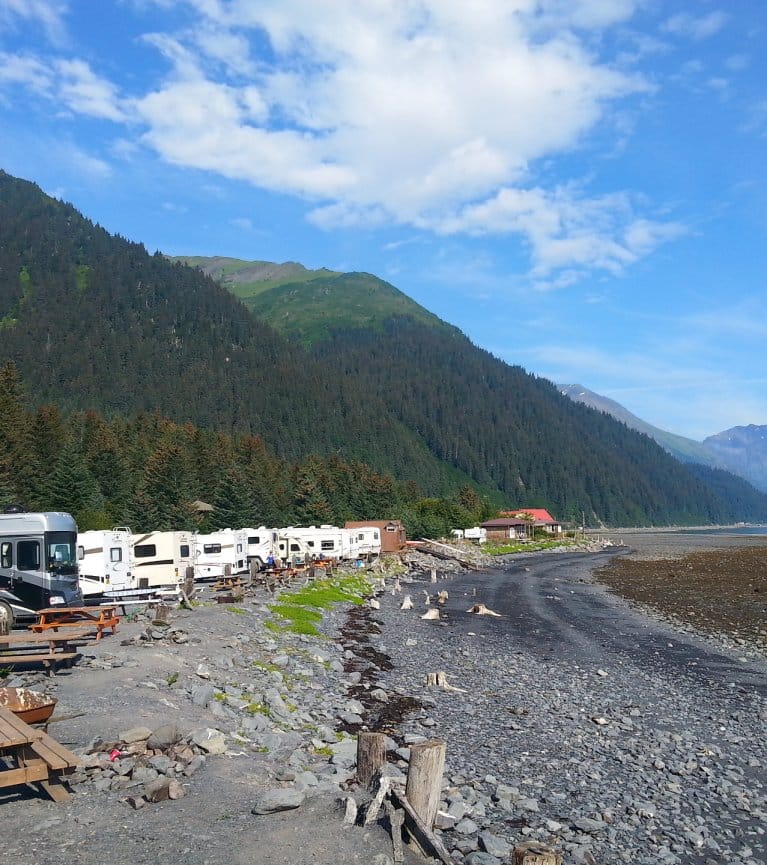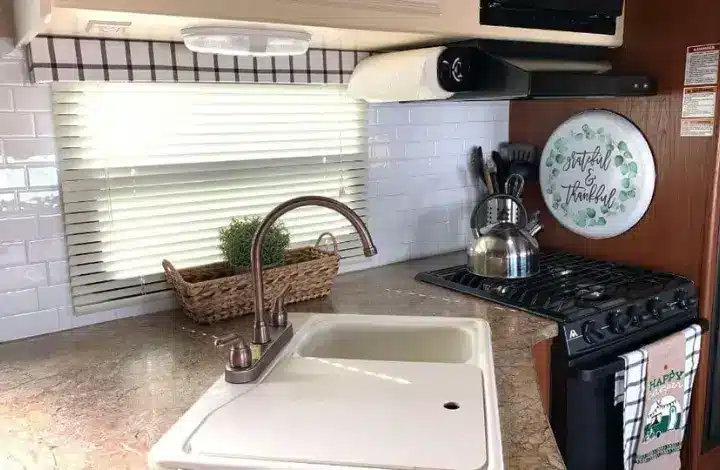RVers Guide to Yellowstone National Park
If you’re looking for an “other worldly” RV getaway this season, be sure to put Yellowstone National Park at the top of your list.
Yellowstone National Park is the world’s first national park, established in 1872. It was founded to protect the hydrothermal activity, geologic features and other natural wonders.
It’s the eighth largest national park in the United States, at 2.2 million acres, and contains half of the entire world’s active geysers.
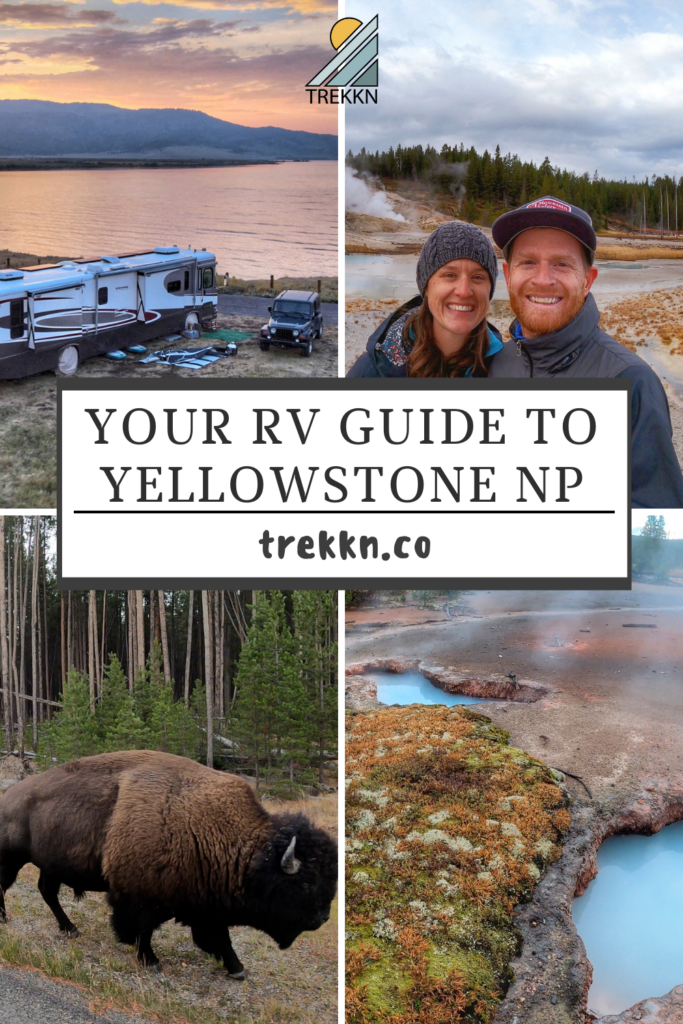
Yellowstone is also one of the most popular National Parks in the US, attracting nearly five million visitors every year.
There are twelve campgrounds, but less than half of those allow reservations. The remaining sites are all first-come first-served, and are said to often fill by 6am.
Therefore, Yellowstone is best for the careful planners who can get reservations, or the flexible early birds who can score a first-come spot.
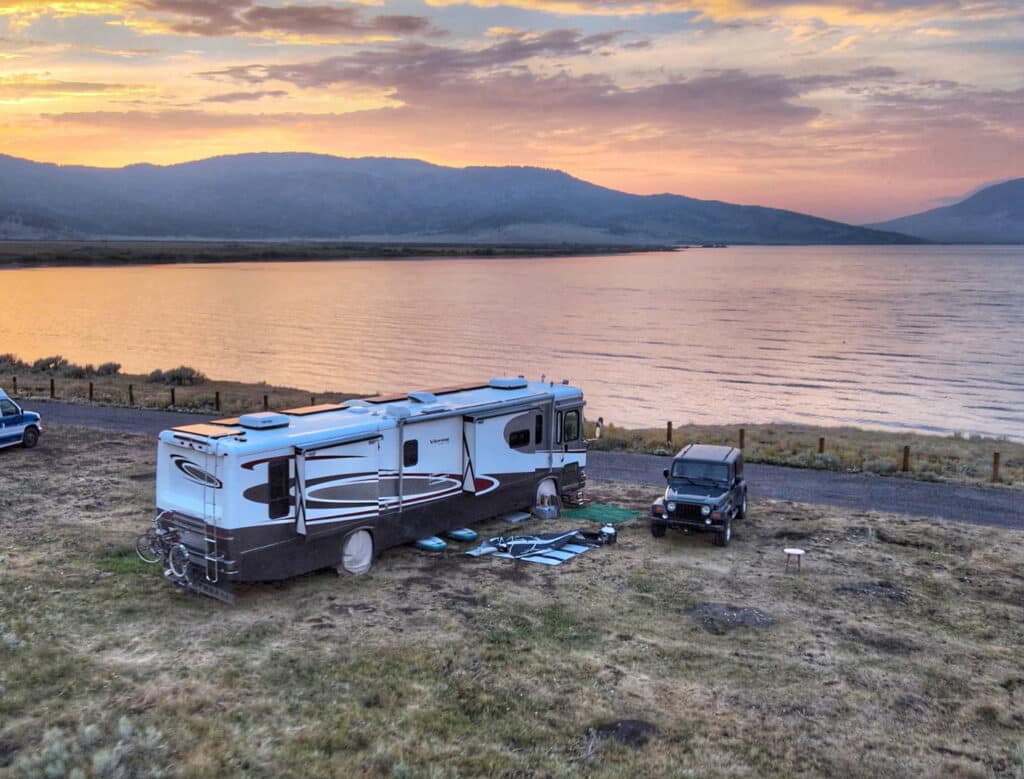
Is Yellowstone RV Friendly?
If you know how to plan an RV trip to Yellowstone, then yes, Yellowstone can be RV friendly.
So let’s talk about some of the essential information for planning your next RV trip to Yellowstone. The best route to Yellowstone depends partly on the type and size of your RV.
Most RV camping spots inside the park are limited for a combined length of forty feet or less. The average pickup truck is nearly twenty feet long, so if you’re towing a travel trailer much longer than twenty feet itself, you may have a hard time finding a spot.
A fifth wheel will have about four to five feet of the RV’s length over the truck bed, so you may be okay with up to a twenty-five foot fifth wheel plus truck.
In addition to campground size restrictions, there are also narrow roads and tight parking lots. All of this means that when it comes to RVs, smaller is better for a camping trip to Yellowstone.
A Class B RV or campervan will be easy to maneuver and will also become your favorite picnic spot on wheels as you explore this amazing park. A larger RV will likely just be where you sleep at night in the park, and you’ll need a smaller vehicle to go out exploring.
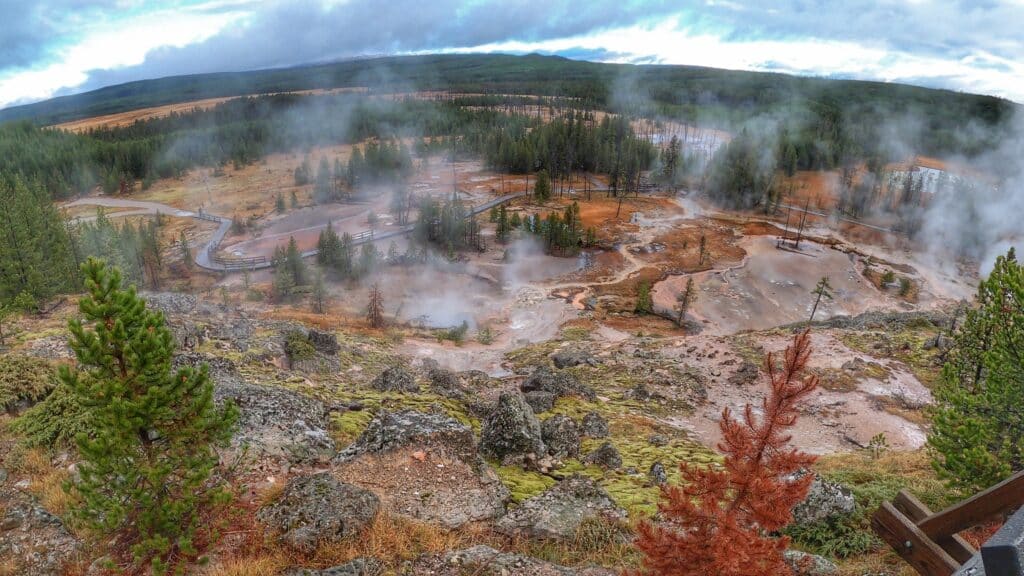
Getting to Yellowstone National Park in an RV
Probably the most important consideration for accessing Yellowstone is the mountains surrounding the park. The Bighorn Mountains east of Cody, WY are the largest and may cause you to avoid the park’s East Entrance.
Northeast Entrance can be Challenging
The next most challenging terrain is found on Beartooth Highway between Red Lodge, MT and the Northeast entrance of the park.
Easiest Park Access through West and North Entrances
The West and North entrances to the park are the easiest and require the least amount of driving in the park to access the main attractions.
We prefer to use the West Yellowstone entrance, coming from Island Park, ID. We enjoy the town of West Yellowstone, and the other nearby recreational opportunities.
Our RV is forty-two feet and we haven’t wanted to bring it into the park. So, we use West Yellowstone as our hub and do day trips into the park from there.
That’s worked well for us, and may be your best option if you have a larger RV like us.
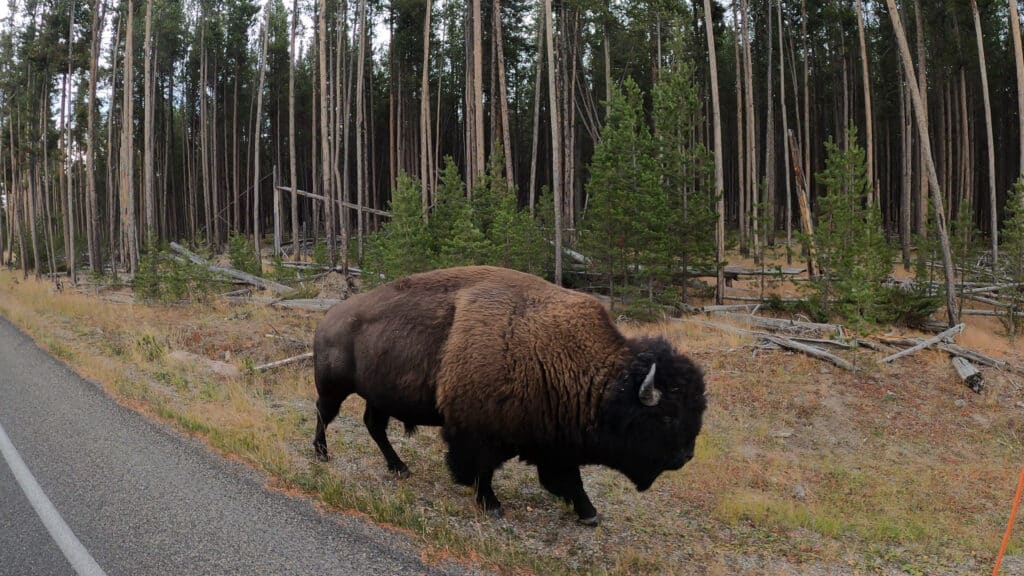
Where to Stay in an RV Near Yellowstone National Park
The reservable campsites in Yellowstone are most always fully booked. In case you are tempted, it’s risky to underestimate your combined length when booking, as you may not be able to fit upon arrival, and there won’t be alternative spots available to move to.
This is something we always worry about because we have a forty two foot motorhome. There have been times when we just barely fit into a National Park campground site. We ended up having to park the Jeep in a separate parking lot because there was no additional space at our site.
My advice is to always slightly overestimate the total length of your RV to be safe.
Next, let’s take a look at the reservable campsites inside Yellowstone National Park. To me, it’s too risky to plan a trip to Yellowstone without reservations.
We’ve even had a hard time finding first-come, first-served camping outside the park, so we certainly wouldn’t risk it inside the park.
You can make reservations up to one year in advance, so start your planning nice and early!
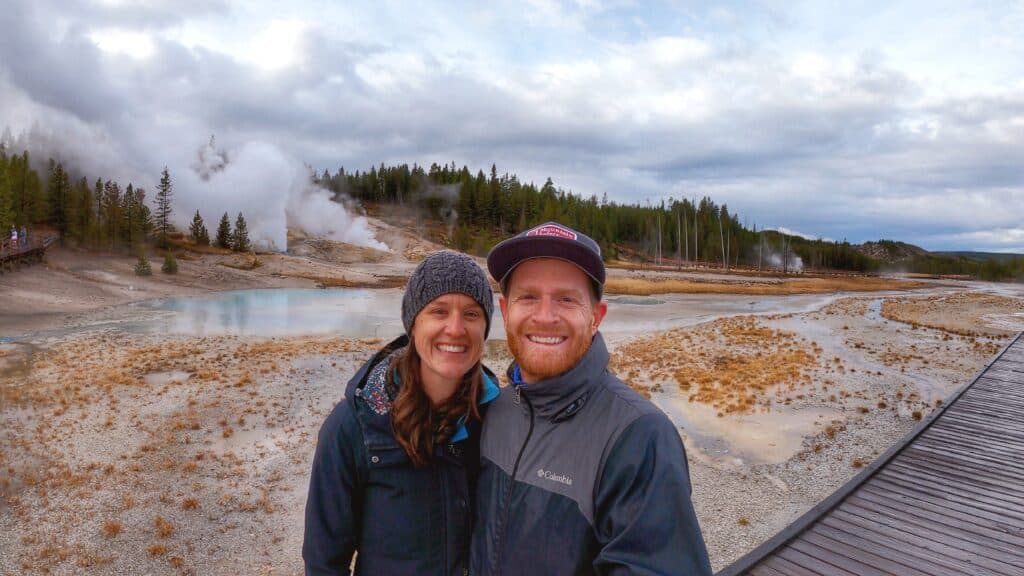
Yellowstone National Park Campgrounds
FISHING BRIDGE
Fishing Bridge is the largest campground in Yellowstone, and some sites were recently renovated in 2022. This is also the only campground in the park with full hook-ups (sewer, water, electric) sites available.
The Upper Loop has 172 paved sites ranging from forty feet to ninety-five feet in total length. In addition, most of these sites are double-wide so you have room to park an RV and tow/toad vehicle side by side.
This way, if it is a forty foot site, you can fit a forty foot RV plus the tow or toad. (Note: this campground only allows hard-sided RVs, no tents or pop-out tent or hybrid trailers, due to grizzly bears in the area.
Some of the sites are single-wide and will not accommodate side-by-side parking of RV and a tow-vehicle. Again, be honest about your combined length when booking to avoid issues.
BRIDGE BAY
Bridge Bay campground is open to RVs and tents, and accommodates RVs up to forty feet long. This campground has no hookups, but there is a dump station nearby.
There are 432 campsites here, located near Yellowstone Lake.
GRANT VILLAGE
Grant Village Campground has over 400 campsites for RVs and tents. Some sites can accommodate RVs up to forty feet.
Similar to Bridge Bay, there are no hookups, but there is a dump station nearby. It is also located near Yellowstone Lake.
CANYON CAMPGROUND
Located near Canyon Village, Canyon Campground offers 310 sites for both RVs and tents. There are no hookups available but there is a dump station located inside the campground.
Pay showers and coin-operated laundry are available as well.
MADISON CAMPGROUND
One of the most popular campgrounds in the park, early bookings are essential to get a spot at Madison. There are 270 sites available for RVs and tents, with some sites big enough for forty foot RV setups.
There are no hookups but there is a dump station on-site.
NORRIS CAMPGROUND
Norris can accommodate RVs up to fifty feet in length, a bit more than the others mentioned above, if you have a larger RV. The campground has 111 sites with generator use allowed.
Please note: this one is bookable through recreation.gov.
Of all the Yellowstone campgrounds, Yellowstone National Park Lodges runs five of them and also manages all of the national park lodges.
You can book many of the Yellowstone campgrounds through recreation.gov, including the last one on our list here.
You can reserve the first five campgrounds listed above at: www.yellowstonenationalparklodges.com/lodging/camping/
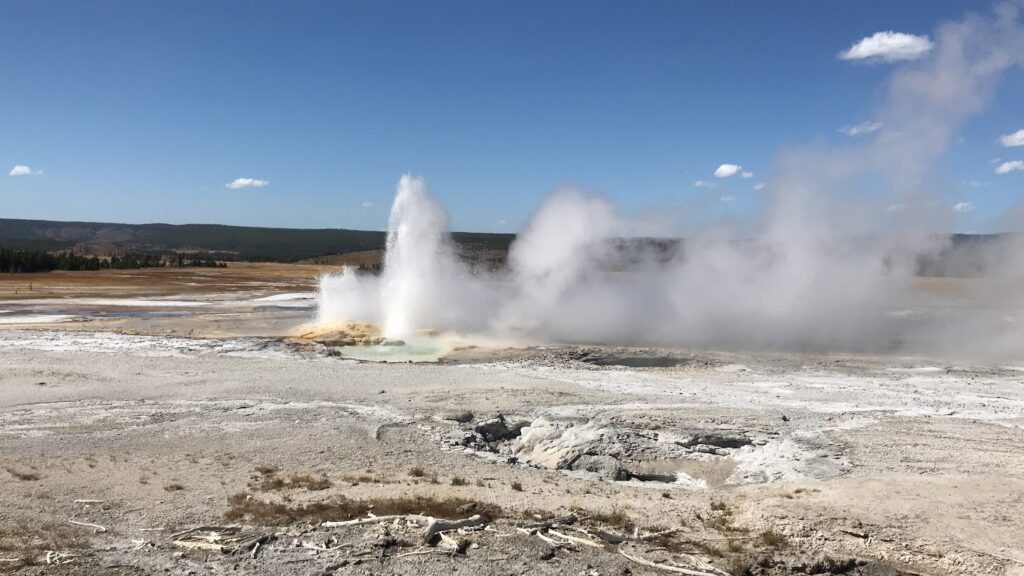
What to Do at Yellowstone National Park
Your Yellowstone RV trip will be full of geysers, mud pots, colorful pools, waterfalls, and wildlife.
GEYSERS
OLD FAITHFUL
Of course, no trip to Yellowstone is complete without a visit to iconic Old Faithful. Get there plenty early before the crowds fill in and choose a viewing spot out on one of the boardwalks, rather than watching from the main viewing area.
STEAMBOAT GEYSER
Less reliable than Old Faithful, but actually bigger, the tallest active geyser in the park is the Steamboat Geyser in Norris Geyser Basin. It can reach up to four times as high as Old Faithful when it erupts.
COLORFUL POOLS
If you want to see the colors of Yellowstone, check out Grand Prismatic Spring and the Fountain Paint Pot. Both of these features display vibrant colors that are a result of bacteria and algae in the water.
The microscopic organisms are called thermophiles because they need and love the extreme temperatures to survive. The name is comprised of ‘thermo’ for heat and ‘phile’ for love.
What to do when visiting Yellowstone Hydrothermal Pools:
- Always stay on the boardwalk or other designated area
- Understand that the hydrothermal water in these natural pools are extremely hot and can cause severe burns
- Do not rush or run through the area
- Supervise your children
- Do not bring pets
GRAND PRISMATIC SPRING
Grand Prismatic is the largest hot spring in Yellowstone. It stretches up to 300 feet in diameter and is 121 feet deep. It’s located in Midway Geyser Basin. You won’t be surprised to learn that parking is very limited.
FOUNTAIN PAINT POT
There is a half mile boardwalk loop where you can witness various hydrothermal features such as geysers, hot springs and fumaroles. Fountain Paint Pot is located in the Lower Geyser Basin.
CANYONS & WATERFALLS
We enjoyed visiting the Grand Canyon of the Yellowstone as well. There are plenty of hiking trails and viewpoints to see the canyon and the waterfall. Red Rock Trail is a top choice for viewing the waterfall. If you’d rather get closer, Brink of the Falls trail is a short, steep trail for an even better experience.
HOT SPRINGS
Lastly, you’ve got to schedule time to visit Mammoth Hot Springs Terraces. These can be viewed either on foot or a drive tour.
There’s an excellent boardwalk with many spots to view and enjoy the hydrothermal features of the springs. It’s incredible to witness how the terraces continue to change.
Be aware that parking fills up early in the day. If you’re driving an RV, you’ll want to plan this as your first stop of the day.
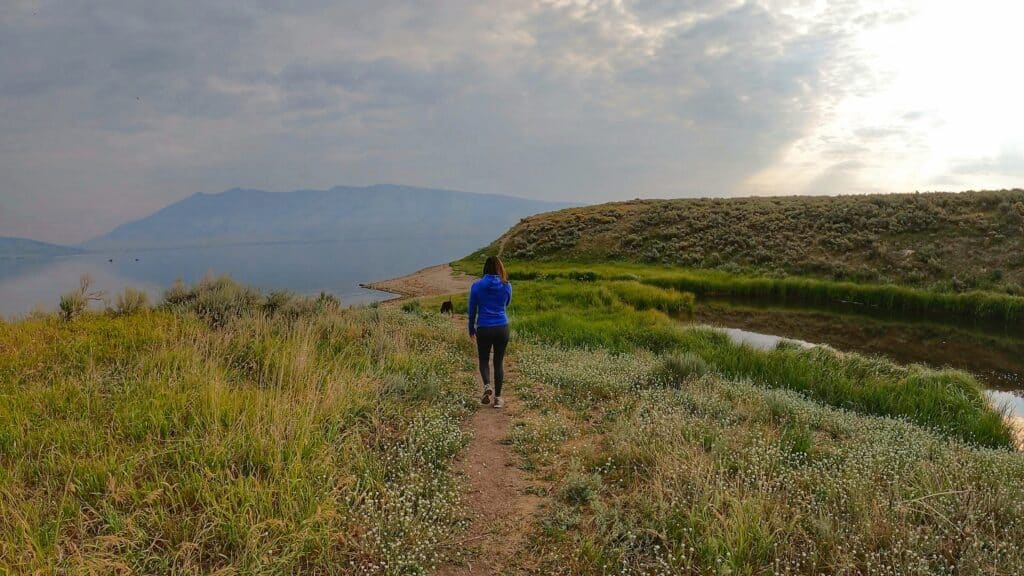
Is RVing to Yellowstone Worth It?
Despite the challenges of acquiring reservations, size restrictions, and worrying about the grizzlies, it’s absolutely worth taking your RV to Yellowstone National Park. There’s literally no other place quite like it!
The best part of staying in your RV in Yellowstone is that you can wake up and start exploring before the crowds.
I’m not sure about all of the entrances, but the entrance one we prefer (West Yellowstone) has a long line at the entrance gates every morning, even before sunrise.
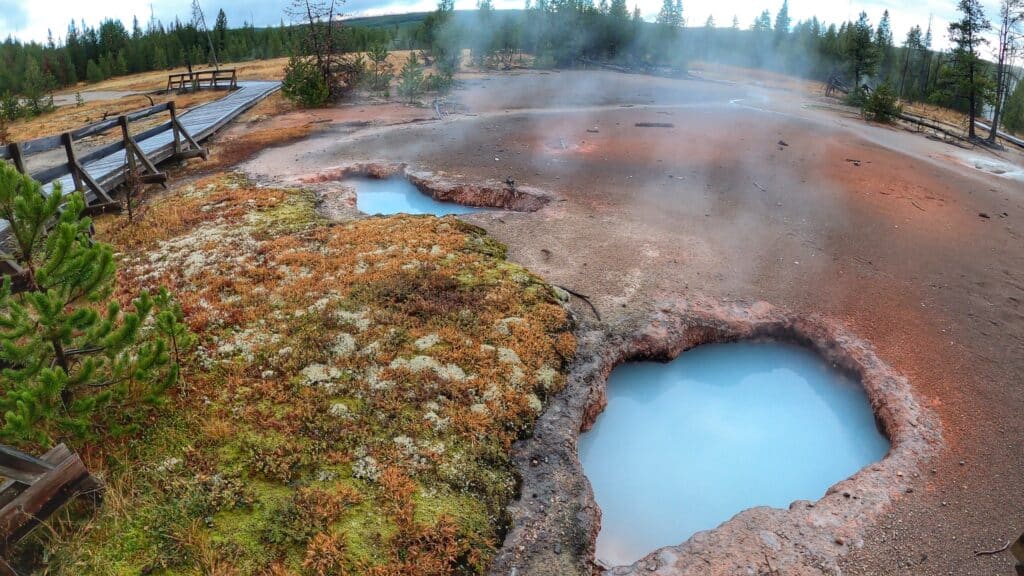
Then, there’s a long line of traffic for the first dozen or more miles of driving inside the park, before some of the roads start to turn off in different directions. The traffic can thin out a bit at this point, but probably not during the busiest days of summer.
If you’re excited about your next RV trip to Yellowstone, I recommend you start your planning early and continue doing your research.
Check road conditions and temperatures before you head for the park. Depending on the time of year, you could encounter road closures, or the water could be off at your campground, so you’d want to come full rather than relying on hookups.
Whatever planning challenges or minor hiccups you encounter, however, I promise it’s worth all the effort. You can easily make Yellowstone National Park a trip you will absolutely never forget.
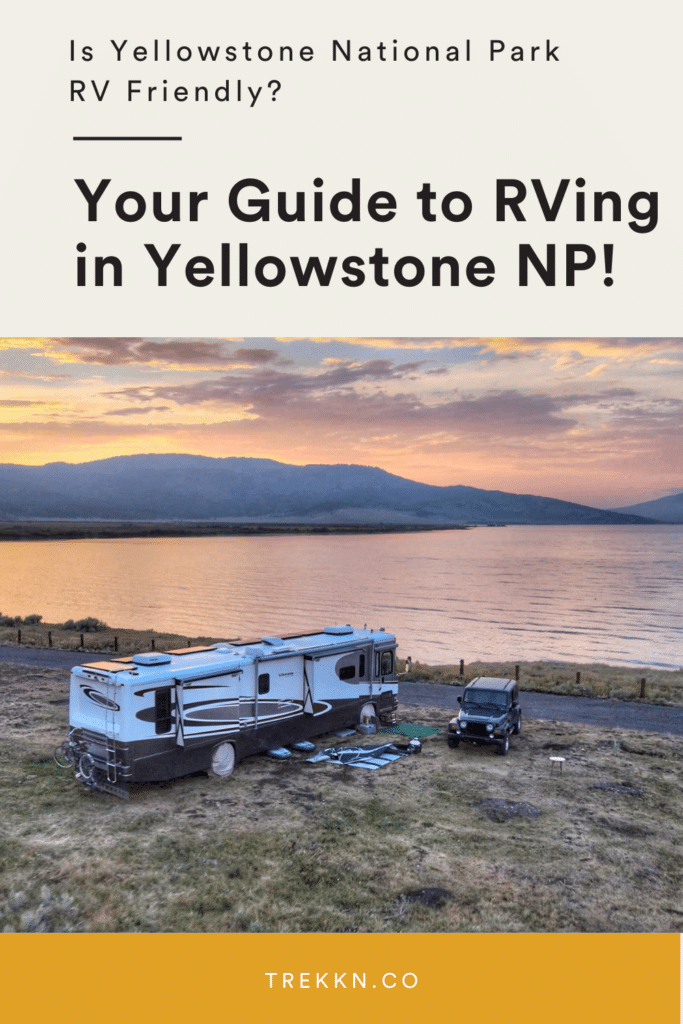
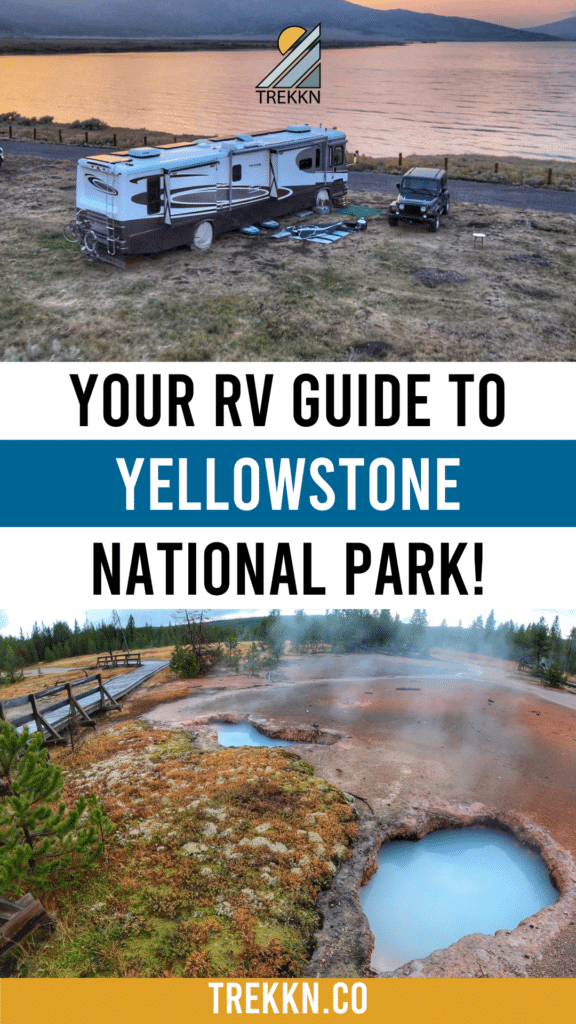
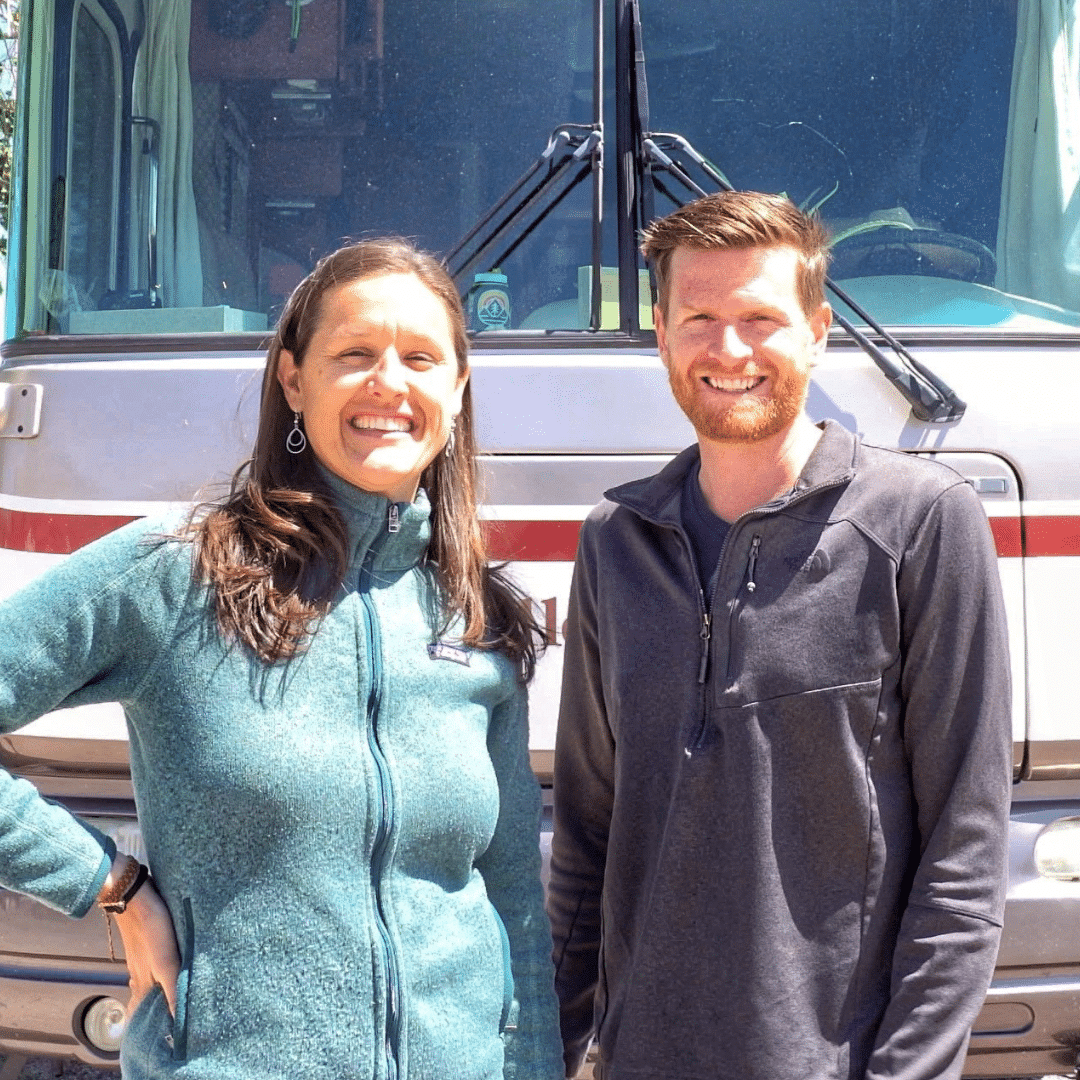
Kristen Bates lives & works from her RV, primarily boondocking off-grid. She owns and operates a women-led travel company, Legit Trips. Kristen loves to explore new places and inspire others to do the same. If she’s not typing away on her laptop, she’s off on an adventure- hiking, biking, or SUP boarding. You can follow her RV adventures @PerpetualMoves and learn more about her travel company at LegitTrips.com.
